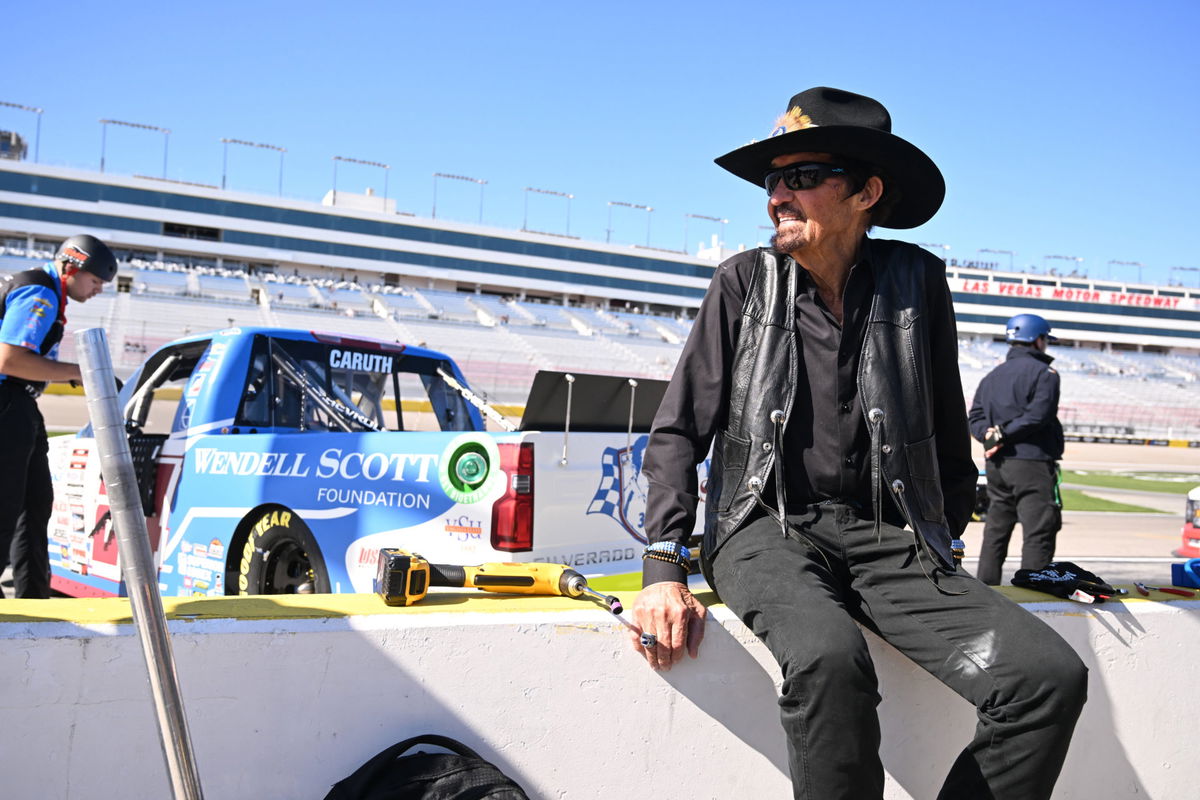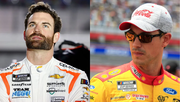
Imago
LAS VEGAS, NV – MARCH 03: Former driver Richard Petty in pit row during practice for the NASCAR, Motorsport, USA Craftsman Truck Series Victoria s Voice Foundation 200 race on March 3, 2023, at Las Vegas Motor Speedway in Las Vegas, NV. Photo by Will Lester/Icon Sportswire AUTO: MAR 03 NASCAR Craftsman Truck Series Victoria s Voice Foundation 200 Icon230303232

Imago
LAS VEGAS, NV – MARCH 03: Former driver Richard Petty in pit row during practice for the NASCAR, Motorsport, USA Craftsman Truck Series Victoria s Voice Foundation 200 race on March 3, 2023, at Las Vegas Motor Speedway in Las Vegas, NV. Photo by Will Lester/Icon Sportswire AUTO: MAR 03 NASCAR Craftsman Truck Series Victoria s Voice Foundation 200 Icon230303232
How does a racing dynasty defend itself when words give way to fists? The crowd at the Greensboro Fairgrounds was captivated by more than just the sound of engines in the spring of 1957. Tensions erupted during driver introductions before a single lap was completed, laying the groundwork for a confrontation that nobody anticipated would get out of hand, and nobody could have predicted how it would end.
Watch What’s Trending Now!
Among the tall people and well-known names present that day, one family would have to contend with a man who was built like a heavyweight champion for their survival as well as their pride. More memorable than the actual race would be what transpired in the final minutes before the green flag.
ADVERTISEMENT
Exploded tempers give way to a fight too big for the racetrack
At the fairgrounds in Greensboro, North Carolina, on April 28, 1957, a brawl broke out during driver introductions that would be remembered for far longer than the actual race. Before a 250-lap race on the dirt track, Lee Petty and Tiny Lund sparred on stage. The 6-foot-5, 275-pound Lund soon overpowered the slack-legged Petty.
Lund was already well-renowned for his toughness. He was given the moniker “Tiny” at a young age after being born in Iowa as DeWayne Louis Lund. He would go on to win the Daytona 500 in 1963 and save Marvin Panch from a flaming vehicle at Daytona, but in 1957, he was just brute force, and Lee Petty was suffering the most.
Richard and Maurice Petty, Petty’s teenage kids, joined in as Lund thrashed Petty. It was ineffective. Lund easily delivered blows, taking care of all three at once. Elizabeth Petty then barged onto the stage. She smacked Lund in the head with her handbag, which was weighted with a concealed .38 caliber revolver. The crowd was stunned, and enormous knots were raised. The altercation stopped immediately.
ADVERTISEMENT
Tiny Lund said later, “Her purse didn’t hurt me. But the .38 Special inside the purse sure did!” The race resumed, but the real story had already been written. Lund ended the fight there, reportedly saying, “If you’re going to beat the Pettys, you’ve got to beat them all.” Years later, Maurice Petty denied rumors that his mom’s pocketbook was so effective as a weapon because of a pistol packed inside.
The fight in Greensboro became a precursor to NASCAR’s spirit of the frontier. Although fights weren’t uncommon, few were as intimate or significant. It established a tone for the Pettys: the family came together despite all obstacles. Their dynasty would be defined by that mindset, which propelled Richard Petty to 200 victories and seven titles. It wasn’t a future champion or a tall warrior who won that April afternoon, but Lund would go on to become a NASCAR icon. The day’s most unbalanced altercation ended with a mother, a pocketbook, and a concealed weapon.
ADVERTISEMENT
Top Stories
FOX Earns Rare Moment of Respect as NFL Honors NASCAR Legend Live on Air

Richard Childress’ Grandson to Be the ‘First Casualty’ of RCR-Kaulig Racing Divorce, Claims Dale Jr.

NASCAR Radio Host Rejects Denny Hamlin’s Warning Amidst Call for Ex-Fox Broadcaster’s Apology

Corey LaJoie Pokes Joey Logano With Backhanded Dig After Star NFL Appearance

The Fastest Way Out of NASCAR: How a Rookie Burned Every Bridge Without Turning a Wheel

Tiny Lund: From Greensboro Brawler to Daytona 500 Hero
Many people rank DeWayne “Tiny” Lund’s victory at the 1963 Daytona 500, which took place on February 24, as one of the most amazing and surprising victories in NASCAR history. The race had many twists and turns and was wild and unexpected. Lund wasn’t initially anticipated to be a contender, but he was brought in at the last minute to drive the No. 21 Wood Brothers Racing vehicle after Marvin Panch was hurt in a crash the week before the event.
The race was quick and fierce from the beginning. At the time, 43 drivers competed in the Daytona 500, which was renowned for its high speeds and difficult circumstances. Lund, who had never driven the car before, was in a strange place. However, he ran in the middle of the pack for the majority of the early laps. And he was able to avoid danger by maintaining a steady pace. Because he was filling in for Panch and was inexperienced with the car, his main concern was simply finishing the race.
ADVERTISEMENT
Disaster struck about halfway through the race. Several leading competitors, including well-known drivers like Joe Weatherly and Rex White, were eliminated in a massive pileup on lap 131. Since several of the favorites were eliminated, this was a crucial point in the race that allowed Lund to advance. Tire wear and track conditions were increasingly important as the race went on. It became difficult for many of the front-runners to keep up their pace. But even though other drivers were becoming more aggressive and intense, Lund was able to maintain his car intact and prevent more collisions.
“Tiny drafted well; we did everything to keep him up in the draft. He went about 42 laps between our first and second stops. Then he went 42 between the next two. We kept doing that each time, a few laps more than everybody else. Once we got inside 40 to go, we knew we had enough fuel to finish.” Leonard Wood said.
As the race came to a close, DeWayne Lund took advantage of others’ unsuccessful attempts to set himself up for success. Lund’s solid driving under pressure earned him a shock Daytona 500 victory. This excited the audience with one of the race’s biggest upsets. He managed to hold off furious late attacks from Jim Paschal and Richard Petty. Lund won the first of five Daytona 500 races for Wood Brothers Racing in the Great American Race in 1963. Tiny Lund earned lasting fame and the nickname “Daytona Hero” after his surprising victory in the 1963 Daytona 500. Despite not being considered a contender, his perseverance and poise under duress made his lone Daytona triumph one of NASCAR’s most exciting and memorable events.
ADVERTISEMENT
ADVERTISEMENT
ADVERTISEMENT
ADVERTISEMENT

